
The Sustainability Journal is the OCDSB's internal online platform designed for teachers and principals to access environmental resources and initiatives offered by the district. It includes a variety of tools such as K-12 environmental education materials, waste management strategies, school energy data, guidance on setting up indoor or outdoor vegetable gardens, vermicomposting, and other valuable resources and challenges.
Additionally, the Sustainability Journal serves as a networking hub for educators to exchange ideas, share resources, and highlight environmental projects they have implemented with their students. The platform showcases the latest initiatives and activities, helping to advance environmental education across the district. Teachers can easily access the journal through their G-Suite accounts. Participation has grown steadily each year, as the system effectively connects those who need these resources most.
Waste Management
The OCDSB is dedicated to waste diversion across all elementary and secondary schools, providing recycling programs with black bins. Schools are encouraged to participate in Litterless and Boomerang Lunch programs. Schools also have the option of participating in the City of Ottawa's green bin program.
School Gardens
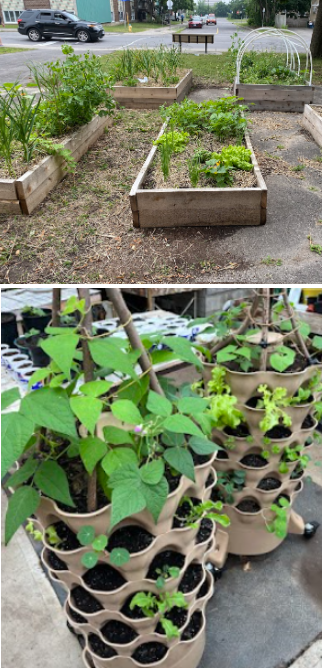
OCDSB schools use a variety of methods to grow vegetables both indoors and outdoors. Over the years, many schools have installed raised garden beds on their grounds, allowing students to cultivate vegetables during the growing season. Currently, more than 80 schools have raised beds where students and teachers can grow and harvest their own produce.
In addition to outdoor gardening, schools have embraced indoor gardening systems, particularly tower gardens. These vertical growing systems require minimal space, making them ideal for school settings. Tower gardens enable students to grow vegetables year-round, even in Ottawa's climate. Over 40 schools are now participating in tower gardening, with some getting creative by starting plants indoors during the winter and then moving them outdoors in the spring for harvesting by the end of the school year.
Energy Management

Using energy data from 2012 as a baseline, the OCDSB has successfully lowered greenhouse gas (GHG) emissions by about 19% compared to that year. This reduction has been achieved through a range of GHG mitigation strategies, including building automation system (BAS) controls and the adoption of energy-efficient technologies and products. Notable examples include LED lighting, air-source heat pumps, and rooftop solar photovoltaic systems.
Fleet Vehicles
The Facilities Department is dedicated to lowering greenhouse gas emissions from its fleet by incorporating hybrid vehicles. Hybrid vehicles were first introduced to the fleet in 2015, and the initiative continues to be a part of the department's ongoing efforts. Currently, the OCDSB fleet includes 20 hybrid vehicles.
Landscape Design using Natural Features
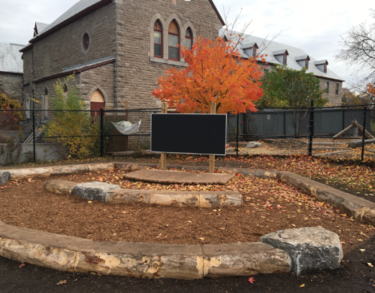
The OCDSB has added many natural designs to school grounds over the last 5 years. School grounds are being enhanced by providing outdoor spaces where students and staff can learn and reflect. There have been approximately 30 outdoor classrooms installed which provide nice learning spaces for students. Designs typically include natural features such as boulders and logs for seating, a stage for instruction, a weather resistant blackboard, all surrounded by trees for shade. Outdoor classrooms are perfect for optimizing school yard space to provide an authentic outdoor learning environment.
Nature Nooks
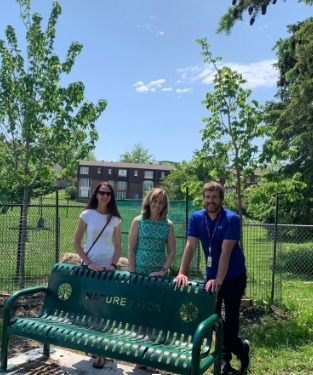
Another exciting environmental initiative we launched was the Nature Nook program. Nature Nooks are designated spaces with benches or seating boulders nestled among trees, providing students a peaceful place to socialize, learn, and reflect. In total, nearly 60 schools received Nature Nooks on their campuses, which contributed over 160 new trees to OCDSB schools.
Tiny Forests
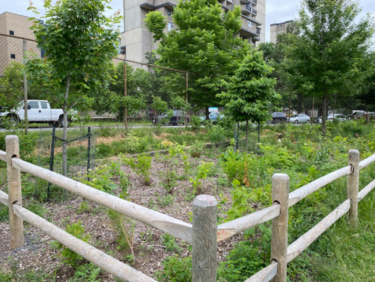
One of our most exciting naturalization projects is the installation of Tiny Forests, which can now be found at several OCDSB schools. These Tiny Forests are a wonderful addition to small urban spaces, featuring native trees, shrubs, and wildflowers planted closely together to encourage natural growth that mimics the stages of ecological succession. They offer numerous environmental benefits, including providing shade, reducing heat, filtering rainwater, and enhancing Ottawa's biodiversity.
Outdoor Education
The OCDSB operates two Outdoor Education Centres: MacSkimming Outdoor Education Centre within the east end of the City of Ottawa and the Bill Mason Centre in the west. Both Centres provide hands-on outdoor programming that is designed and delivered to complement classroom learning in many sections of the Ontario Curriculum. Each visiting group is introduced to the beauty of the natural world and our place in it. Learn more by checking out our Outdoor Education Newsletter.
This 502-acre classroom is used annually by 22,000 elementary and secondary students, who attend the Centres for day programs, to learn and participate in outdoor programs based on their grade’s curriculum.
Reforestation

The OCDSB is participating in reforestation efforts at the Outdoor Ed Centre, MacSkimming. These efforts began over a decade ago by planting tree seedlings on old fields that were once used for agriculture. Tree species include white pine, sugar maple, bitternut hickory, shagbark hickory, eastern white cedar, bur oak, and more. Since 2013, OCDSB students have planted 8994 trees within the OCDSB Outdoor Education Centre’s 502 acre classroom. All trees are planted by OCDSB high school students. These efforts promote our commitments to climate action through the development of carbon sinks.
Forest School
The OCDSB's Program Services Department provides Forest School learning sessions for OCDSB elementary schools at the OCDSB Outdoor Education Centres (MacSkimming and Bill Mason Centre). Forest School is an immersive place-based education program where students routinely visit a particular ecological area where they can explore, play, measure, research, develop their skills & plan their time. Many of the activities & experiences from this program can easily be returned back to the regular classroom & connected to the Ontario Curriculum.
The main objective is to provide time for these OCDSB students to be outside, in a functional ecosystem so they can develop their comfort levels, build positive relationships, be active and have an understanding of the natural world.
Carbon Sink
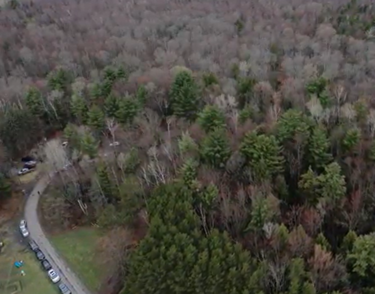
The Canadian Council of Forest Ministries states that 1 hectare of mature trees in Canada absorbs 6.4 tonnes of carbon dioxide (CO2) annually. Of the 203 hectares, the OCDSB Outdoor Ed Centres (Bill Mason and MacSkimming) have 188 hectares of mature forests. That means that combined, both outdoor centres function as a carbon sink absorbing 1,203 tonnes of CO2 per year. The full year 2023 Energy Summary states that OCDSB total annual emissions were 24,521 tCO2. Using that value, the Outdoor Ed Centres act as a carbon offset for approximately 5% of OCDSB emissions in 2023.
Environmental Steering Committee
The OCDSB is fully committed to advancing environmental education and action within the system. To ensure effective implementation, we have an established Environmental Steering Committee made up of staff members from various departments, representatives from the City of Ottawa, and community partners like the EnviroCentre.
Eco-Conference and Environmental Professional Development
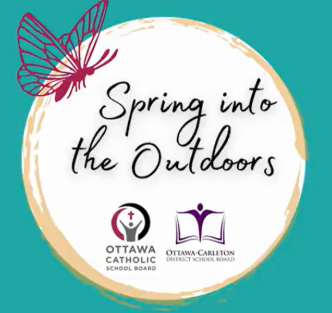
The OCDSB has a strong tradition of hosting Eco-Conferences aimed at educators, offering them valuable professional development in Environmental Education. In April 2024, the OCDSB collaborated with the Ottawa Catholic Board to present an Eco-Conference for educators from both boards. This partnership enhanced our ability to provide a more engaging event.
Participants were able to attend workshops that connected environmental education to various subjects, including math, science, Indigenous Land-Based Teachings, the arts, physical education, and more. The conference took place at MacSkimming, the OCDSB’s outdoor education center, allowing attendees to immerse themselves in an authentic environmental experience. We are excited to continue this collaboration with the OCSB to make the Eco-Conference an annual event.
Wild Bee Study
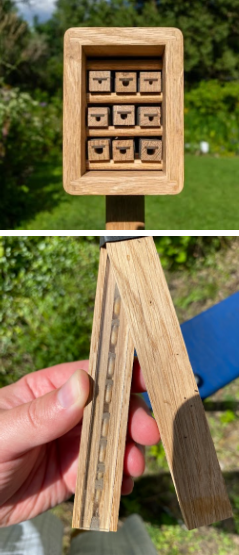
The OCDSB has partnered with the University of Ottawa to conduct a biodiversity study focused on the population dynamics of solitary bees nesting on school grounds. The study involved 20 different sites, with each school receiving its own nesting box. These boxes were strategically placed in quiet, undisturbed areas of the grounds. Installed in April 2024, the nesting boxes were monitored until the fall. Teachers incorporated the monitoring of these boxes into lesson plans, offering students an engaging, hands-on learning experience. The University of Ottawa also tracked the boxes for data verification. Here are the results:
The average number of nests per bee home was 4.5, totaling 63 nests for the 2024 season. These nests provided homes for an average of 24 baby bees each. Seven different species of solitary bees, including leaf-cutter bees, resin bees, and yellow-faced bees, utilized the OCDSB nesting boxes. Since solitary bees are not hive-minded, they are not likely to sting, as they do not exhibit the same protective, aggressive behavior as colony-based bees.
Environmental Partners
Special thanks to our partners who have helped to put Sustainability in Action, The Envirocentre and Green Learning.

